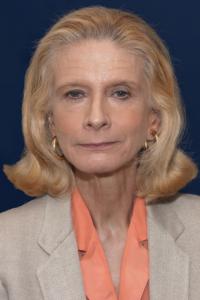
Practice, Perfected
Data Analytics Inform Best Practices
As a kid, Chad Curtis, CDM Class of 2019, played hockey and piano. Both activities accentuated routine—drills designed to boost accuracy, increase speed, build muscle memory, enhance technique. As a teen, the Ohio native mastered the strict protocol that governs the performance of Taps at a military funeral—everything from the angle of the bugler’s feet to the three-count pace at which the instrument is raised. Throughout his final year of high school and first year of college he honored fallen heroes by playing at memorial services.
Now a rising fourth-year student at Columbia’s College of Dental Medicine, Curtis sees opportunities to optimize oral health care—whether filling a cavity, placing a crown, or evaluating the best course of treatment for a patient—by objectively identifying techniques to enhance performance. “I approach things with a big emphasis on efficiency,” says the aspiring oral surgeon. “Your productivity, outcomes—like whether a filling fails—might depend on your routine.”

Chad Curtis, DDS '19, shown in the Columbia University Center for Precision Dental Medicine, a Columbia University College of Dental Medicine clinic that offers rich data for research.
Unlike such heavily routinized professions as flying an airplane or overseeing a construction project, dental medicine has historically been a one-on-one transaction between patient and doctor. While this is the case across many fields of medicine, there is a special challenge in dentistry: Evaluation of technique, done visually, limited by how wide a patient can open her mouth. Subtle details of work can be difficult to see, oversee, and ultimately evaluate and link to outcomes.
To identify techniques and routines that might enhance patient outcomes, Curtis is working as a research liaison at Columbia’s Center for Bioinformatics and Data Analytics in Oral Health to analyze data collected in the college’s Center for Precision Dental Medicine, which opened in October 2017. He has been working under the leadership of Joseph Finkelstein, MD, PhD, founding director of the center.
The 15,000-square-foot facility, located on the fifth floor of the Vanderbilt Clinic, boasts 48 operatories, each with a specially engineered work-station featuring a procedure chair with sensors in the seat, head rest, and instruments—as well as video feeds—to collect data on everything from when a dental chair moves to the order and duration of use associated with the instruments. “Every dentist has their own way of doing things,” says Curtis, “but maybe this facility could allow us to establish a truly correct way of doing things.”
Curtis is one of a growing number of students pursuing data science research at the College of Dental Medicine, an area made possible through unprecedented data streams collected through the center. The value to be gleaned from the data compiled goes far beyond questions of efficiency or improving the technique of individual practitioners.
“Systematic evidence in dental care is limited,” says Finkelstein, an associate professor of dental bioinformatics. “To promote personalized, precision medicine, it’s very important to get quantitative data. This system allows us to collect different data streams about patients and providers to develop personalized prediction models.” Such personalized care offers the possibility of tailoring treatment to specific populations, and even treatment tailored to a particular patient’s genotype.
Analysis of dental practices has long been hampered by the methodological shortcomings of self-report, says Carol Kunzel, PhD, director of research for the College of Dental Medicine. “As a social scientist, I’ve always been interested in looking at what predicts clinician behaviors, and the extent to which they adhere to evidence-based guidelines,” says the professor of dental community health (in dental medicine) and of sociomedical sciences at CUIMC. “But I am hindered in my own investigations in my ability to assess behavior. How was I going to know what a clinician really did?” Using real-time data collected at the center, she says, investigators will finally be able to surmount self-report to achieve the kind of rigor and validity about which they could previously only dream.
In the spring, the American Dental Education Association affirmed the value of student research in the new facility by awarding the College of Dental Medicine a four-year, $35,000 scholarship to fund opportunities like Curtis’s investigation with Finkelstein. “Ours is a state of the art facility, offering students an opportunity to prepare for the future, whether in clinical practice or leadership roles as academic researchers,” says Kunzel, who co-authored the scholarship application with Finkelstein. “We haven’t even begun to imagine what will evolve.”

This digitally-controlled dental chair, custom-made for Columbia, collects data that is aggregated and used for scholarly research like Chad Curtis' work.
